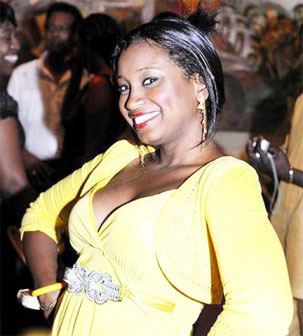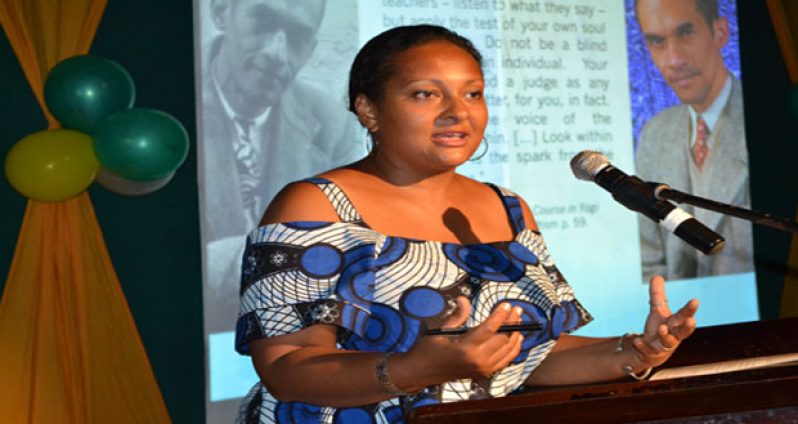A FIVE-PART series titled ‘Race: A Guided Discussion’ staged at Moray House Trust has come to an end after weeks of engagement on the subject. The protracted period during which the event was staged allowed time and space for re-adjustments to positions, rebuttals and rejoinders.
At the end, it was like an opening engagement on the subject – so much ground was covered, so much said and too much left unsaid. That which was left unsaid will, sooner rather than later, come out as life goes on or, hopefully, when other such events are staged.

The event ‘Race: A Guided Discussion’ was facilitated by Dr. Paloma Mohamed, a Social Psychologist on sabbatical from the University of Guyana. The third session, ‘Representations of Race in Guyanese Writing’, is of relevance to the objective of this column.
That third forum shocked, shamed, mortified, brought degrees of elucidation and levity to the subject, and raised more questions than answers. That third forum was a significant part of the whole.
The previous two sessions were important introduction to the subject via the showing of two films, the screening of the prize winning National Geographic film, ‘Journey of Man’, and ‘Race: The Power of An Illusion’, and resulting discussions after.
The fourth session was titled ‘Questions of Race in Other Spaces’ and the final session ‘Guyana: A Positive Example for the World’.
The theme for that third session on race was ‘Representation of Race in Guyanese writing’. The participants for that third session included academics, literary critics, poets, dramatists, graphic artists, and writers.
The session started with Dr Mark Tumbridge who concentrated on the novel, ‘Lutchmee and Dilloo’, written by John Edward Jenkins, first published in 1877. The author treated Indians in sympathetic manner while other races like the ‘Negroes’- his word, Europeans, and Chinese were treated as peripheral characters.

There are many reasons for this. One of the main reasons was the fact (and the author made of note of this in his preface, ‘the field is a new one for fiction’) that it was the first time that Indians were a worthy subject of English literature. Another reason could be found in the fact that Jenkins came to British Guiana in 1870 acting on behalf of the Anti-Slavery Society and the Aborigines Protection Society ‘to investigate the coolie condition’.
Tumbridge ended with the following verse from the poem ‘They came in ship’ by Mahadai Das.
Commissioners came,
capital spectacles in British frames
consulting managers about costs of immigration.
The commissioners left, fifty-dollar bounty remained.
• Dr Joyce Jonas’ presentation was measured and flawless, as usual with her treatment of literary issues. Jonas focused on the novel, ‘Frangipani House’ by Beryl Gilroy and en passant made reference to ‘Palace of the Peacock’ by Wilson Harris. Jonas raised the issue on blurring of boundaries/identities especially in the makeup of the crew members in Harris’ book.
• Sonia Yarde, teacher, actress and playwright, focus on her play, ‘The Colour of Race’, revealing some unsavory displays of racial bigotry. Her intent was to use drama to get home her message of taking the positive elements of race in order to mend, and fashion a better society.
• Vanda Radzik, a rights activist and a supporter of the arts, focused on Martin Carter in order the break the cycle of the race folly. Radzik also made reference to ‘The Hummingbird Tree’, a novel set in Trinidad, by Ian McDonald.
• Petamber Persaud focused the autobiographical influence on all writing begging the question of truth, half-truths, and selected memory in such writing. Persaud touched on two novels of his, ‘And So What?’ and ‘Overtures’; the theme of both was respect for each other, tolerance and working together.

• Barrington Braithwaite – graphic artist, displayed advertisements of soaps and detergents used in the past which defined race (between Whites and Blacks) in such a manner leading to self hate (among Blacks).
• Ras Michael Jeune – dub poetry exponent, gave the audience a ride down the corridors of history in a sound performance of dub poetry.
• Mosa Telford, one of the bold new voices in drama, focused on her prizewinning play ‘Sauda’ which brought out the autobiographical treatment of race in literature and shed light on the preference for lighter shades people.
• Dr Juanita Cox, expert on Mittelholzer, looked at the prize-winning novel, ‘Timepiece’, by Janice Shinebourne, which also depicted how race and class are perceived from place to place – from a rural Guyana to an urban Guyana.
From the floor, the focus was on the usage of words like ‘Negro’, the other ‘n’ word, and ‘Collie’. In the end, like the whole issue of race, it was left open ended. However, it was of a general view the context will decide whether usage was denigrating or acceptable/vogue.
Responses to this author telephone (592) 226-0065 or email: oraltradition2002@yahoo.com
By Petamber Persaud













